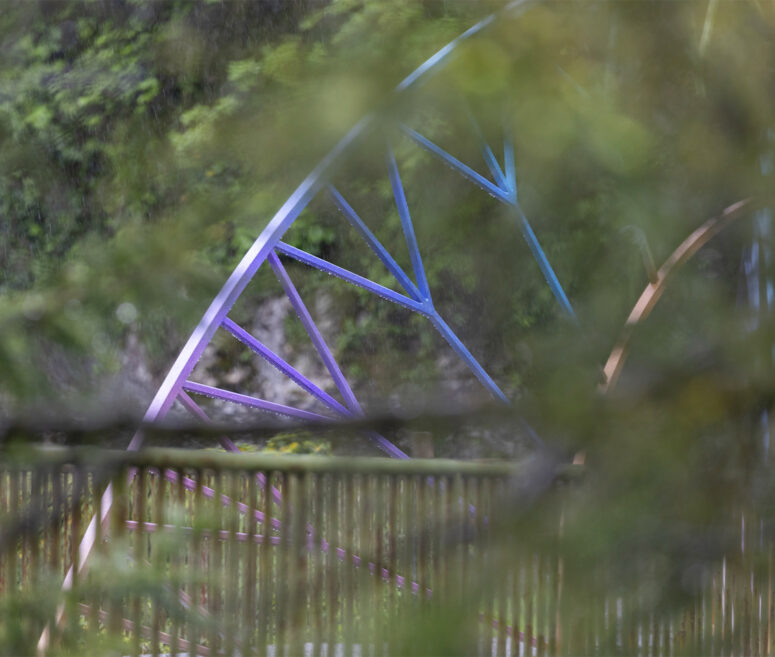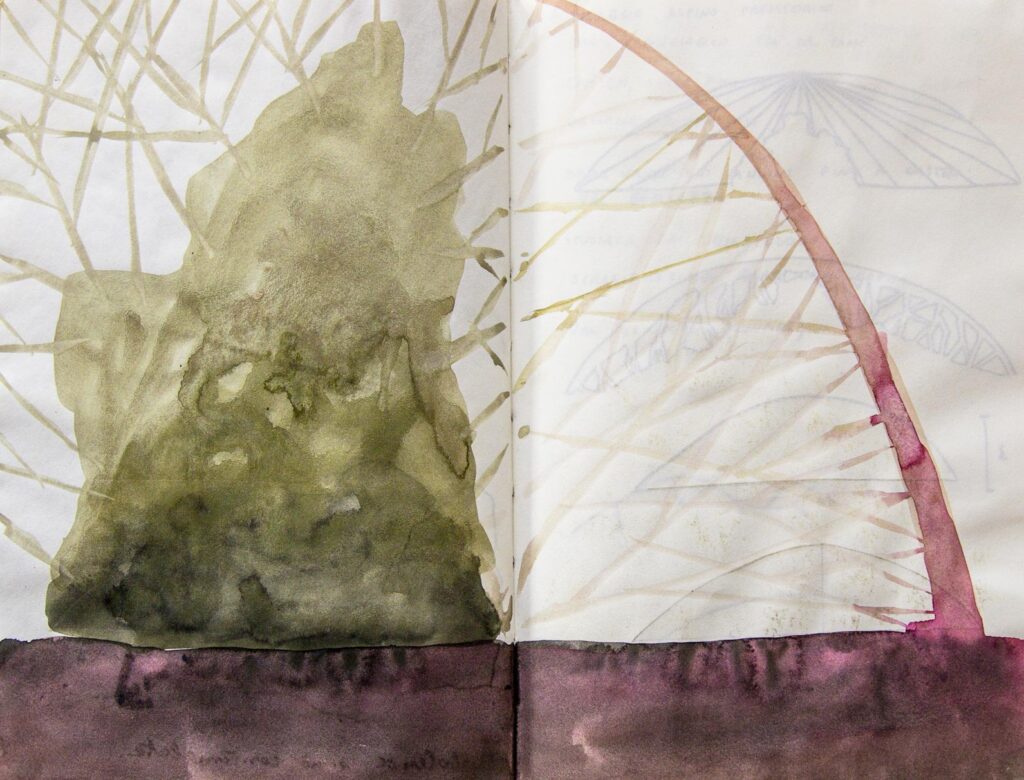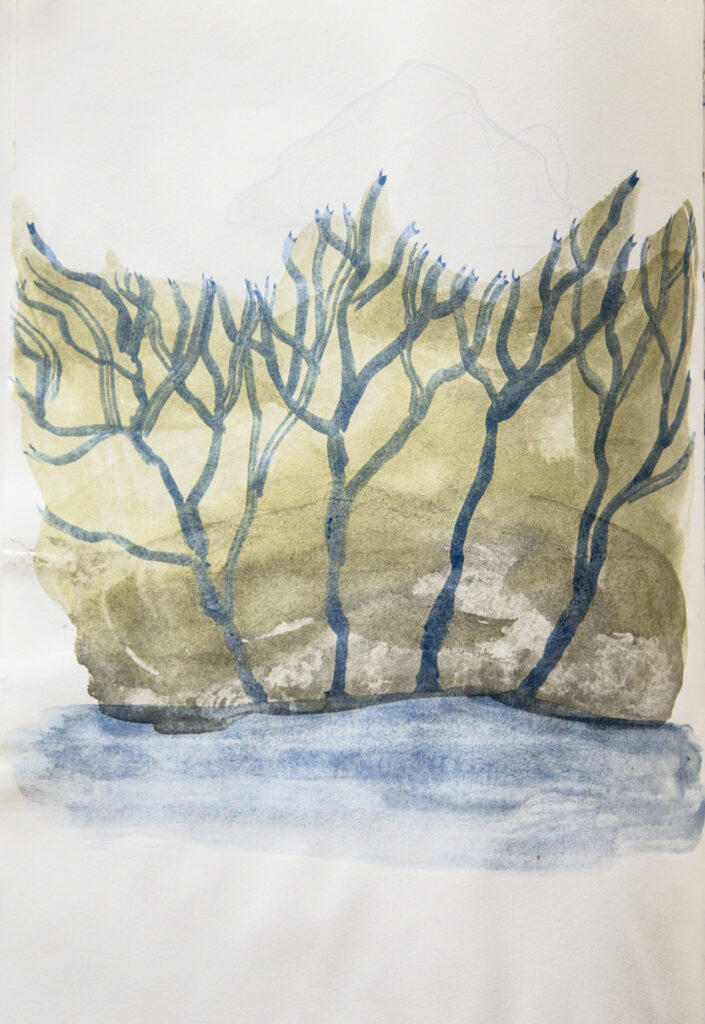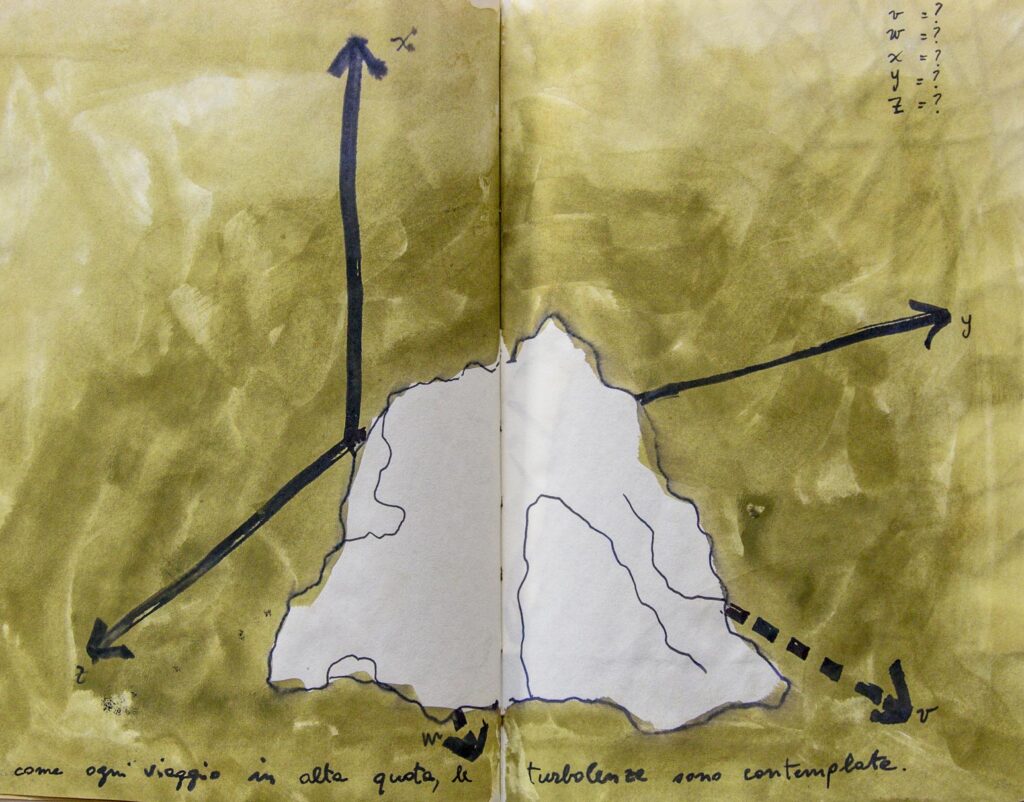The Dalmine summer colony in Castione della Presolana opened on July 9, 1933, as part of the corporate welfare of the Società Anonima Stabilimenti di Dalmine. Located in a mountain setting, the colony offered a summer stay to the children of the company’s employees, providing them with a recreational high-altitude environment.
The activities carried out at the colony were playful and therapeutic in nature, exploiting the advantages of the mountain climate. The building, set within a 23,000-square-meter park, featured a dining hall, meeting and exercise rooms, an infirmary, dormitories, staff quarters, a kitchen and a laundry room. The architecture of the colony, designed by Giovanni Greppi, reflects a formal language inspired by the sense of classicism promoted by the Fascist regime. However, Greppi adapted his style to the mountain setting, using local materials and integrating the building with the surrounding landscape.
Over the years, the colony continued to host hundreds of children each summer until it finally closed in 1986.
The historical and cultural importance of the colony was revitalized through the participatory project developed by Chiara Gambirasio, in collaboration with Fondazione Dalmine.
The intervention originally took the form of a workshop featuring a number of “eyewitnesses” who actually attended the TenarisDalmine summer colony in Castione della Presolana as children. The women involved were invited to relive, rediscover and share experiences and memories related to the time spent at the colony through a work focused on color, which for the artist represents the medium through which to intuitively and subjectively perceive the world, but also a condition in which to “reside,” without the mediation of words, to learn to feel beyond the immediately perceptible.
Credits: Photo Nicola Gnesi; sketches of the artist
This introduction is followed by five questions for Chiara Gambirasio
How would you describe the typical situation leading up to the elaboration of a project? What phases are most recurrent in the project elaboration process?
I do not plan. I simply try to make works, and by works I mean gestures that materialize in a given space-time through matter. I try to do less and less, but to be more and more present in every single gesture. First of all, I observe myself in the mental processes have led me that up to that moment, to that exact place, and I begin to deconstruct them. One step at a time toward an emptying, more and more radical and profound with each creative cycle. I immerse myself in the place and let myself sink in as deeply as I can, trying to remove any resistance I become aware of. As the thought dissolves, I feel my body change; therefore, the matter I interact with changes form reflexively. Drawing, writing, touching, talking, looking—it all becomes one and the same thing. From the fullness of mind, I surrender to an ever-deepening nothingness, until from that core void, a shower of forces and directions suddenly begins. I follow them. I follow the directions. I see where all these magnetic vectors take me without bothering to follow a single idea, without worrying about putting a specific idea into practice. And as I follow them, I wait and I wait and I wait and I wait. I wait for the energy released by the loosening of the bonds between thoughts to manifest. I wait for the liberated energy to gather according to such directions, until it all concentrates in one single gesture. That gesture is the synthesis of a transformative process. That gesture is repeated in all its chromatic variations. That gesture is a brushstroke of dense, colorful matter that solidifies in space. The gesture may last a second, a month or a year, but it is animated by the same aggregation of inner forces, so I experience it as a unique gesture. Time is annihilated. When the single gesture comes to an end, the work emerges.
What do you hope communities will gain from experiencing your works?
More than with communities, I try to interact with each individual. During a creative cycle, anyone who comes into contact with me influences the work, becomes a co-creator of it, for real. In this case, I longed to restore a sense of reconciliation with a semi-abandoned landscape, or at any rate one recognized more for its past or projection into the future of ideal transformative potential. I tried to do something now, with the present, right now. I hope to make people want to embrace M’ama, to caress V’arco, and to want to make the leap from the works to the landscape.
And what, instead, do you hope they will unlearn from you? Is there a particular ideology you’re hoping to dismantle?
I try to dismantle the desire to grasp things. I would like to bring a gust of wind to onlooking hearts. To let the eye flow without fixating on anything, perceiving the relationships between things. I would like people to simply remember, because everyone already knows that when we are alive we are not afraid to let go of things, we do not hold them back, we do not stifle them, we are free to be creatures and not images of ourselves.
Who are the thinkers who inspire your work?
There are many, but I sense the need to lean on the work of other intellectuals ever less. I experience study as peer-to-peer confrontation, where everyone brings something and we contaminate each other, consciously or unconsciously. Sometimes a single word from them is enough to trigger rivers of reflections and gestures in me. I feel part of a large family of thinkers with whom I share more of an approach than theoretical content. Among the dearest teachers and soulmates I might name at this time are those of Krishnamurti, Jung, Einstein, Kuhn, Steiner, Spinoza, Junger, Jodorowsky… and many others.
In what way does your practice help us imagine new worlds or a more habitable world?
When I allow myself to dream, I imagine I can make one more dimension visible in the everyday perception of each individual. Just as Einstein made it possible for us to conceive of space and time as a single force through mathematical formulas, so I would like to make it possible to perceive through the common senses, in every moment, an extra dimension, the fifth. It may not be a new world, but it certainly appears to be one deeper than how we are used to considering it now.
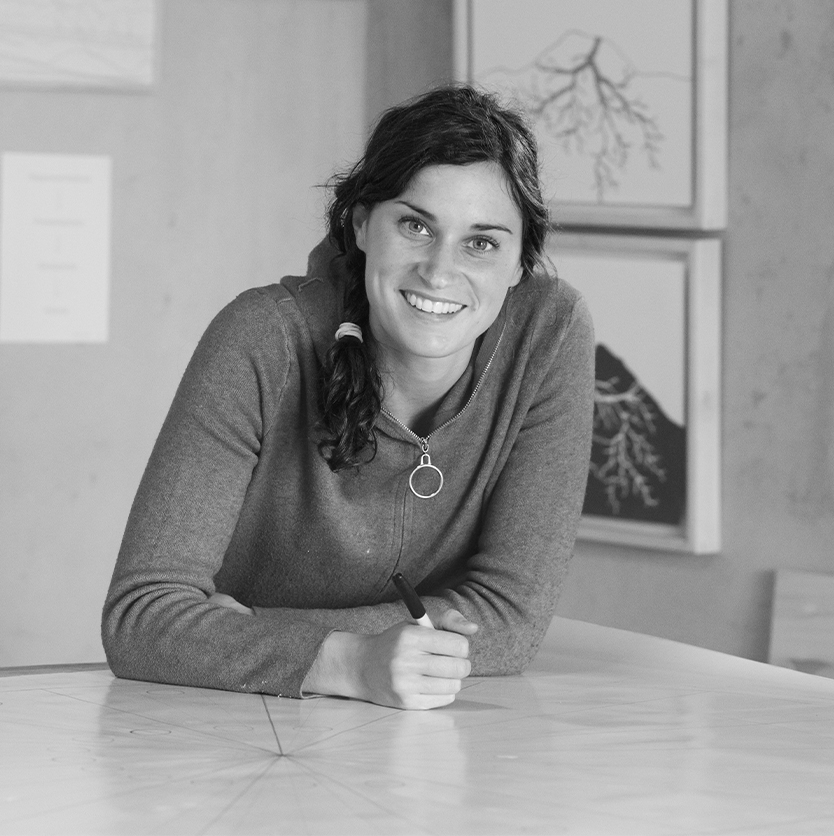
Note biografiche
Chiara Gambirasio (Bergamo, 1996), lives and works in Mapello (BG). She trained at the Brera Academy of Fine Arts in Milan, where she graduated in 2019 in Painting and then specialized in Sculpture in 2022. Hers is a multidisciplinary research, yet one bound together by the essentially pictorial principle of encoding reality through color. This practice is referred to by her as kenoscromìa, i.e. the chromatic vibration in/of the void. Her focus is on points of color that appear in reality as intruders, and which she aims to transform through the resulting images—pictorial, photographic, sculptural or hybrid—into fulcra of perspective. Public works include in 2023 Terre D’Istanti, curated by Roberto Mauri for the municipality of Mapello (Bergamo); Ammiraggio curated by Zeno Massignan on Monte Stivo (Trento); and in 2021 Sedimento, curated by Adiacenze Bologna (Spilamberto, Modena). Solo exhibitions include in 2022 Vedere dentro, curated by Gabi Scardi, Galleria Cinquegrana (Milan); 5Dì, curated by Caroline Corbetta, Il Crepaccio; in 2021, Istruzioni di Volo, curated by Sergio Risaliti, Museo Novecento (Florence). Group exhibitions include, in 2023, Visibilia, curated by Isabella Puliafito, Museo di Villa Croce (Genoa) and at Palazzo Ducale (Gubbio); in 2021, L’Armonia, curated by Sergio Risaliti, Manifattura Tabacchi (Florence); in 2020, Corpi sul Palco, curated by Andrea Contin at the Museum of Modern and Contemporary Art in Rijeka.



